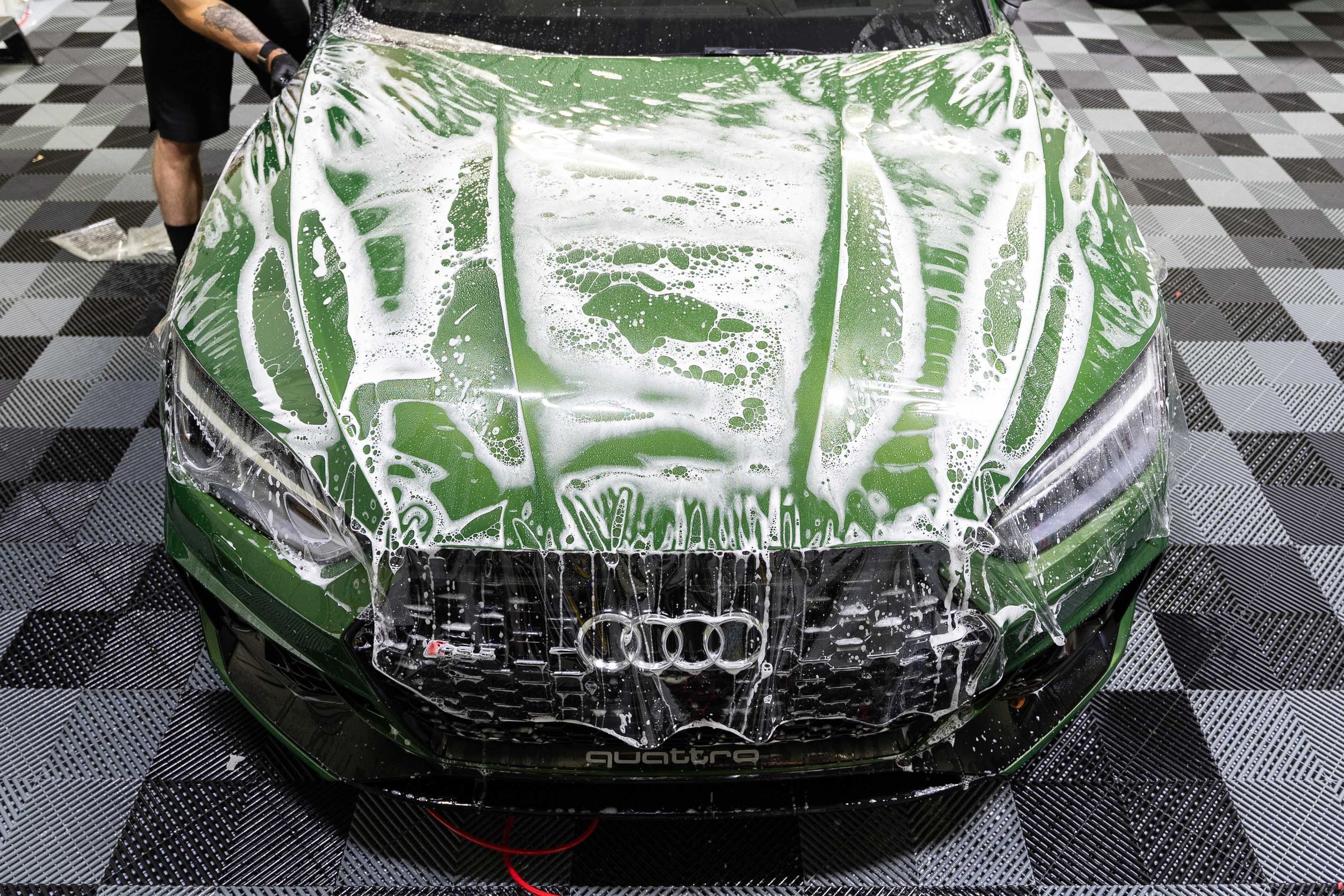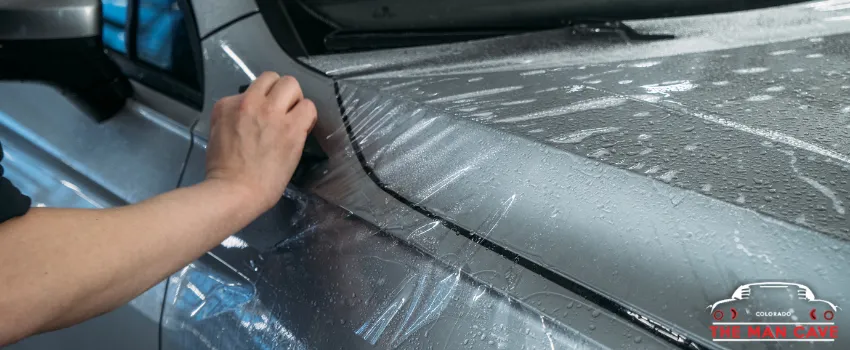Extend your car's shine with expert paint protection film.
Extend your car's shine with expert paint protection film.
Blog Article
Just How Paint Security Movie Shields Your Cars And Truck From Scratches, Chips, and Environmental Damage
In an age where lorry aesthetic appeals and longevity are paramount, Paint Security Movie (PPF) has arised as a tactical remedy for protecting your cars and truck versus the unavoidable damage of daily driving. This sophisticated movie not just provides a powerful obstacle against scratches and chips yet likewise offers protection from numerous ecological hazards that can endanger your vehicle's coating. Recognizing the complexities of exactly how PPF does in these capacities discloses its crucial role in vehicle maintenance. As we check out the multifaceted benefits of this technology, the implications for your auto's preservation come to be progressively obvious.

Comprehending Paint Protection Film
Comprehending Paint Security Film (PPF) starts with acknowledging its objective and composition. PPF is a clear, polycarbonate urethane film developed to shield a vehicle's outside surface areas from a range of potential damage. It is typically used to high-impact areas such as the hood, fenders, and bumpers, where the threat of scratches, chips, and abrasions is dramatically enhanced.
The film is crafted to take in the impact of little debris, such as gravel and road particles, which can lead to surface imperfections (paint protection film). Its structure allows it to stick securely to the paintwork while remaining versatile adequate to comply with the shapes of the automobile
Furthermore, PPF is frequently designed with self-healing properties, allowing it to recoup from minor scrapes and swirl marks gradually when subjected to heat. This characteristic boosts the long life of the movie and preserves the automobile's aesthetic appeal.

Benefits of Paint Protection Film
Among the standout advantages of Paint Protection Film (PPF) is its capacity to guard a car's outside from ecological threats and daily wear. This clear, resilient layer properly obstructs hazardous components like UV rays, bird droppings, tree sap, and roadway grime from harmful auto paint. By protecting against oxidation and fading, PPF helps maintain the car's aesthetic charm gradually.
Furthermore, PPF acts as a barrier against chemical impurities that can etch or tarnish the paint surface. Its self-healing residential or commercial properties enable small scratches and swirl marks to go away when revealed to heat, ensuring that the car preserves a refined appearance without constant detailing.
The installment of PPF can additionally boost the resale value of a cars and truck, as a well-preserved exterior is an attractive attribute for prospective customers. This safety movie is personalized, allowing for customized applications to specific areas, such as high-impact zones or complete automobile protection, depending on the proprietor's choices.
How PPF Protects Against Scratches
Paint Security Film (PPF) gives a robust protection versus scrapes, making certain that a lorry's surface stays pristine. This transparent, long lasting film is crafted click for source from advanced polymers that offer premium resistance to abrasions. When applied to vulnerable areas of a vehicle, such as the hood, fenders, and side mirrors, PPF works as a sacrificial layer, absorbing the effect of small scrapes and stopping them from permeating the automobile's paint.
The self-healing homes of lots of PPFs further improve their effectiveness. When subjected to warmth or straight sunlight, the movie can recover from great scrapes, going back to its smooth surface area and maintaining the aesthetic appeal of the vehicle. This attribute not only prolongs the life of the paint below yet also reduces the demand for costly repairs or touch-ups.
Additionally, PPF is developed to adhere securely to the surface of the lorry, which assists avoid dust and particles from getting entraped underneath. This limited bond ensures that the film remains reliable over time, offering recurring defense against the everyday deterioration that can diminish a cars and truck's look. Generally, PPF attracts attention as a positive link remedy for maintaining a vehicle's finish against scrapes.
PPF and Environmental Risks
Ecological risks present substantial risks to a car's outside, making effective security important for preserving its look. Repaint Security Film (PPF) functions as a formidable barrier against a variety of environmental hazards, including UV rays, acid rain, bird droppings, and tree sap. These contaminants can wear away a vehicle's surface gradually, resulting in discolored paint and pricey fixings.
UV radiation is specifically damaging, as it can trigger paint to oxidize and shed its appeal. PPF is crafted with UV-resistant residential or commercial properties that assist to reduce this impact, maintaining the car's shade and sparkle. Additionally, the film works as a guard against acidic substances that can engrave and stain paint surfaces.
Bird droppings and tree sap, typically seen as small problems, can actually trigger substantial damage if left without treatment - paint protection film. PPF gives an easy-to-clean surface that stops such materials from bonding to the paint, decreasing the risk of staining and rust

Installation and Upkeep Tips
Accomplishing a flawless installment of Paint Protection Film (PPF) is vital for optimizing its performance and longevity. To ensure an expert application, it is suggested to have PPF installed by an experienced technician. They need to thoroughly clean up the automobile's surface area, removing page dirt, dirt, and impurities that can endanger attachment.
Before installment, the movie must be very carefully gauged and reduced to fit the certain shapes of the lorry. Using a warm gun can aid mold the film to uneven forms, improving its sturdiness. After setup, it is necessary to allow the film to heal for at the very least 1 day prior to exposing it to any kind of moisture.
For maintenance, clean the lorry consistently using a pH-balanced soap and a microfiber cloth to stay clear of scratching the movie. Waxing the PPF can boost its appearance and supply an extra layer of security, but ensure the wax is compatible with the film product.
Conclusion
Finally, Paint Defense Film (PPF) acts as a crucial barrier that safeguards vehicles from different forms of damages, consisting of scrapes, chips, and ecological hazards. Its sophisticated polymer structure and self-healing properties enhance longevity while preserving the aesthetic allure of automobiles. By properly mitigating threats connected with UV exposure, roadway particles, and various other dangerous components, PPF adds to the longevity and upkeep of a car's exterior, inevitably reducing the requirement for costly fixings and improving resale value.
Report this page